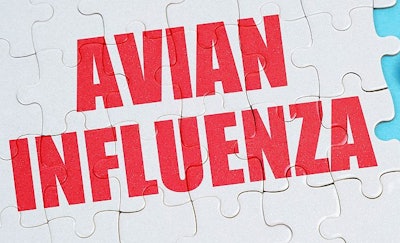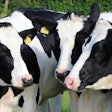
A new spike in cases of highly pathogenic avian influenza (HPAI) among wild birds has raised the alarm of possible new outbreaks in commercial poultry in Northern Ireland. For French poultry farmers affected by outbreaks in 2022-2023, there are new financial support schemes.
As mid-summer approaches, there has been a marked easing in the number of reported HPAI in European poultry. However, there is little evidence of the previously observed seasonal fall in wild bird cases. Indicating the continuing presence of the H5N1 virus serotype in the wild population, this points to an ongoing threat to the health of commercial and hobby flocks.
Just last month, the agriculture department for Northern Ireland, DAERA, lifted HPAI-related restrictions for poultry keepers. With effect from June 2, DAERA lifted the Avian Influenza Prevention Zone (AIPZ) in the region.
However, last week, the department announced that wild birds at four locations across Northern Ireland had tested positive for HPAI.
In an updated risk assessment, the department’s veterinarians report that the risk of incursion into poultry flocks — commercial or hobby birds — has increased again. It urges all poultry keepers to remain vigilant, as well as to step up biosecurity measures.
Chief Veterinarian Dr. Robert Huey said the alert was elevated because as some of the wild birds were found near Lough Neagh. This is an area with a high density of commercial poultry farms.
France, Russia report new HPAI outbreaks in commercial poultry
Of the European Union states, only France has registered new cases of HPAI in commercial poultry over the past two weeks. This is according to the Animal Disease Information System by the European Commission (EC; as of June 17).
Since the start of this year, 375 outbreaks of HPAI in poultry have been confirmed in 20 European Union (EU) member states and neighboring countries. This includes two outbreaks in Turkey (Tűrkiye).
For comparison, 24 nations registered a total of 2,321 outbreaks in poultry through this system during 2022.
Of the total, the country with the most outbreaks — now with 149 — is France. This is an increase of just one from the previous EC update dated June 3. Next come Hungary (79 outbreaks to date), Poland (59), and the Czech Republic (Czechia) and Germany, each with 24 outbreaks in the year to date.
Latest update from the French agriculture ministry indicates no change in the number of HPAI outbreaks. As of June 19, the total remains at 400 for the current “season,” which began in August of last year.
EC does not include Russia in its disease situation reports.
However, the Russian veterinary authority has officially registered a new outbreak involving commercial poultry in the Volga federal district.
During the first week of June, the H5N1 HPAI virus serotype was detected at a farm in the Mari El Republic, according to the World Organisation for Animal Health (WOAH) notification.
Around 50,000 of the more than 484,500 birds at the premises died.
Based on reports to WOAH, the previous outbreak series in this region ended in early March. Source of the virus is not known, but a wild bird found dead nearby was positive for the virus. Furthermore, Mari El is among the regions of the federal district where wild birds have tested positive for the same virus variant since early last month.
More financial support for France’s disease-hit poultry sector
Further state support for the French poultry sector has been announced by agriculture minister Marc Fesneau. These aim to improve the cash flow for poultry farmers in departments hit by HPAI outbreaks during the 2022-2023 season.
For all birds that have had to be slaughtered since May 1, health compensation payments will increase from 75% to 85% of market value. This aims to support farmers with the costs of cleaning and disinfecting buildings, as well as the safe destruction of poultry carcasses and products that cannot be sold.
For poultry businesses within regulated areas, there will be an additional scheme covering economic compensation. Up to 50% of the estimated losses will be paid in the coming months, with the aim of supporting business cash flow.
Furthermore, from the start of 2024, this scheme will be extended to support downstream poultry companies and specializes services affected by the restrictions arising from the epizootic. This will cover some of the loss in profitability achieved in 2023. Details of this compensation scheme are still to be finalized.
Two new HPAI outbreaks in Europe’s captive birds
So far in 2023, 13 countries have together registered a total of 86 outbreaks of HPAI in captive birds through the EC’s system (as of June 17). This category appears to cover backyard poultry, zoos and similar premises.
Recording the most outbreaks in captive birds have been Germany and France, now each with a total of 29 for the year. For Germany, the figure has not changed since the end of April. However, two more outbreaks have been added for France since the previous edition dated June 3.
Rising, widespread outbreaks among wild birds
Despite the approach of mid-summer, there is still no sign of an easing in HPAI outbreaks among Europe’s wild birds. Still being hard hit by the disease appear to be seabirds such as gulls and terns.
Up to June 17, the EC’s System had recorded 2,551 outbreaks across the EU and neighboring states. This is an increase of 154 since the previous update dated June 3.
Worst affected have been Germany (817 outbreaks for the year to date), France (349), the Netherlands (278), Italy (169), Belgium (157), Austria (131), and Switzerland (127).
For each of these countries, the total for each of these nations has risen since the EC’s report two weeks previously.
Also registering more cases over this period were the Czech Republic (Czechia), Denmark, Hungary, Latvia, Lithuania, Luxembourg, Norway, Slovakia, Slovenia, Spain, and Sweden. First outbreak of the year has been registered by Finland, bringing the number of nations reporting one or more HPAI outbreaks in their respective wild bird populations to 27.
For comparison, in 2022, 33 of the region’s countries confirmed cases in wild birds to the EC — a total of 3,245 outbreaks for the year.
Not covered by the EC system is the United Kingdom (except for Northern Ireland), where a further 29 cases have tested positive for the H5N1 virus serotype. This is according to the latest notification to WOAH.
Meanwhile, in Russia’s Central federal district, the same virus has been detected in another gull found dead in the Vladimir region.
















